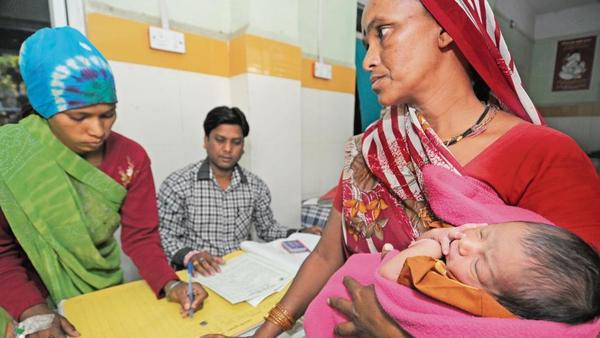

The government’s efforts to provide better healthcare to people in rural areas seem to have resulted in them tapping the formal healthcare infrastructure more. Mint delves into the impact the government’s initiatives in this regard are having in villages.
What is the rural healthcare situation?
The latest data on live births, infant mortality and deaths suggests more people in rural areas are visiting doctors than ever before at private and government clinics/hospitals. The percentage of live births where the mother got medical attention at delivery either at a government or private hospital rose from 73.1 in 2012 to 81.9 in 2017 at the all-India level. Similarly, 47% got attention before their death in 2017, up from 34.6% in 2012. In both events, birth and death, all the 22 states in surveyed showed an improvement from the previous time.

Which state fares the best on healthcare indicators?
Nagaland fares the best, with the lowest death rate and the lowest birth rate, says the latest bulletin of the Sample Registration System. The death rate in 29 states and Delhi for 2017 ranges from 3.6% in Nagaland to 7.5% in Chhattisgarh. Nagaland scores well on birth rates, too, sharing the fifth spot with Chandigarh at 13.5%. The health indicators of its rural areas are good as well, with the birth rate at 14% against an all-India rural average of 21.8% and the death rate at 4.2% versus 6.9%. The IMR in its rural areas is 7%.
What percent of GDP is spent on healthcare?
At 1.4% of GDP, India spends among the least on healthcare. The Centre aims to raise it to 2.5% by 2025. The National Health Policy 2017 seeks to hike states’ health spending to over 8%.
How are better healthcare services affecting rural lives?
Fewer children are dying at birth not just in urban areas but also in rural regions. The infant mortality rate, widely accepted as a crude indicator of the health scenario of a country, fell from 58% (infant deaths per 1,000 live births) in 2008 to 37% in 2017 in rural areas, while birth rate came down to 21.8% from 24.4% during the same period in those areas. Death rate declined during the decade. The rate of decline in these years has been higher in rural areas (around 14.5%) than in urban areas (10.5%).
What’s the Centre’s budget for health?
The Centre has made an outlay of ₹64,999 crore for health in FY20, 16% higher than the FY19 revised estimates. Of this,₹33,651 crore is set aside for the government’s flagship scheme, the National Health Mission. It is an umbrella plan that now counts Ayushman Bharat, the world’s largest healthcare scheme, as its core plan to make medical care affordable for all. This guarantees eligible families cover for inpatient costs of up to ₹5 lakh annually. It will be implemented in conjunction with existing state insurance schemes.
[“source=livemint”]
